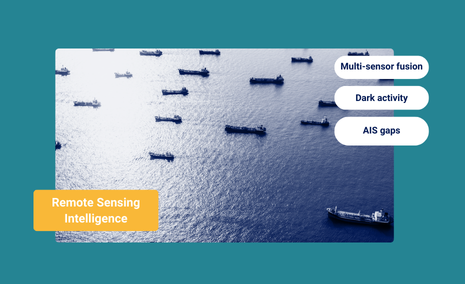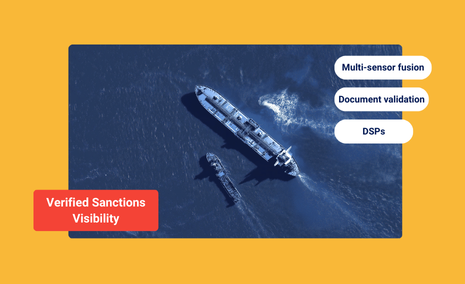Case Studies
Multi-Source Tech Enhances Operational Readiness
One of the big problems for national intelligence, defense, and law enforcement organizations – as well as many others throughout the maritime ecosystem who are required to detect, identify and monitor vessels – is the HUGE amounts of data.
For instance, smuggling detection requires understanding the regular vessel patterns of thousands of ships and their past behavioral history, current sanctions restrictions and evasion typologies, deceptive shipping practices, etc.
The maritime ecosystem changes quickly and maintaining operational readiness and strategic decision-making capabilities requires the right technology platform. Without an AI-powered solution, it is impossible to analyze hundreds of millions of data points to quickly arrive at an accurate risk prediction, and act upon it to mitigate exposure.
The bottom line is that no one approach, or technology can serve as a single source of truth, monitor the entirety of the vast seas, and provide a holistic view of risk. Maritime domain awareness and putting dots on a map is not sufficient…because some of those dots represent ships that are NOT where they purport to be! Not all vessels that transmit are legit – rather than risking their vessels and cargo by “going dark,” today’s more sophisticated bad actors prefer to “hide in plain sight” by using techniques such as location (GNSS) manipulation.
Windward, the leading Maritime AI™ company, understands the obstacles and the solutions to overcoming them.

When we overlay the vessel’s estimated locations provided by Spire’s technology onto the Windward map, we gain certainty of the vessel’s location. By contextualizing the vessel operations, Windward users can connect the location (GNSS) manipulation to a specific regime and evaluate it according to their operational strategy and targets.


When a vessel goes dark, or disables its GNSS input to the AIS device, the challenge is to collect reliable data that can be used to place the vessel in the EEZ, to prove it engaged in illegal activity.
When overlaying the below vessel’s historical path (in this case going back to 2016), it is shown that the vessel is avoiding operating in Argentina EEZ when transmitting its location.

But the new data layer by Spire’s AIS Position Validation indicates the whereabouts of the vessel during its dark activity – starting on April 7 and ending on the 9th.

According to the Spire’s AIS Position Validation, we can see it was operating in the Argentina EEZ while the vessel’s transmitted location was disabled.
By combining Windward’s behavioral analysis with the calculated locations, organizations can enhance and contextualize dark activities, and enforce local laws and regulations accordingly.








